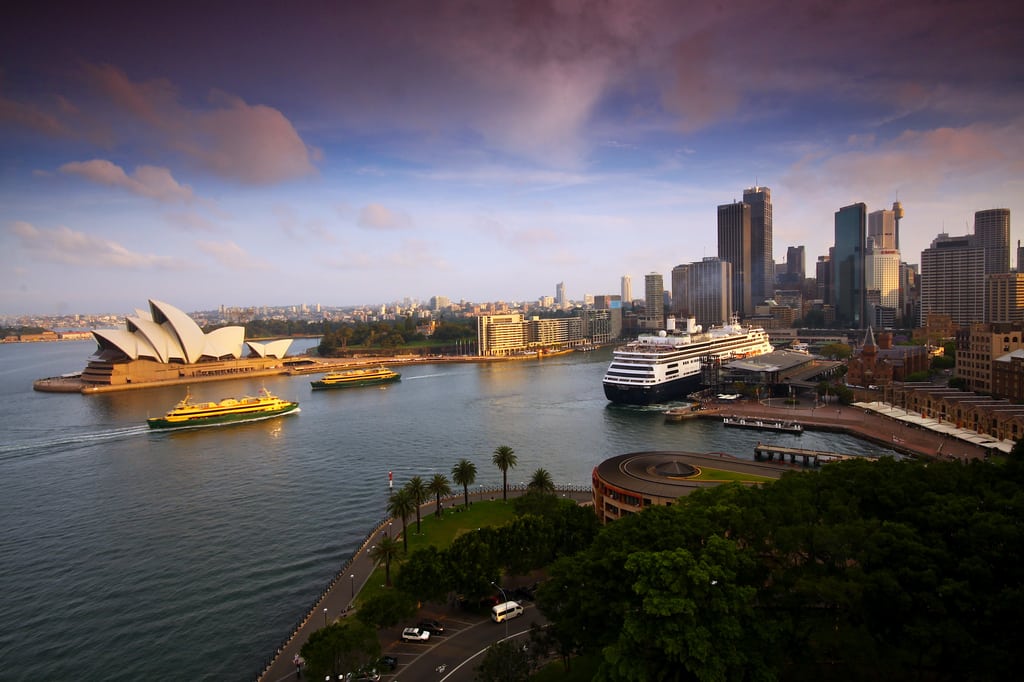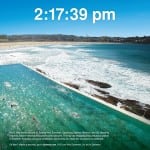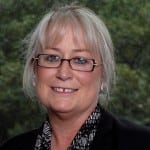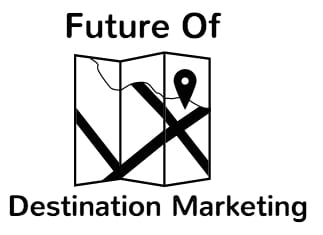Skift Take
Chipchase likens her destination marketing organization to a content company that both consistently shares information and measures its impact in order to tweak what it puts out to which markets.
- An ad for Sydney.
- Sydney promotes its summer season.
- An ad for VIVID Sydney.
- A summer ad for Sydney.
- Destination NSW CEO Sandra Chipchase.
Editor’s Note: Skift is publishing a series of interviews with CEOs of destination marketing organizations where we discuss the future of their organizations and the evolving strategies for attracting visitors. Read all the interviews as they come out here.
This continues our series of CEO interviews that began with online travel CEOs in Future of Travel Booking (now an e-book), and continued with hotel CEOs in the Future of the Guest Experience series (which is also an e-book).
Sydney is a world famous destination touting iconic attractions including the Sydney Opera House, Harbour Bridge, and Bondi Beach.
Sydney received almost 3 million international visitors in the year ending September 2014, a 6.3 percent increase over the previous year. Sydney receives 94 percent of visitors to New South Wales, making it the most important market to promote within the state. Sydney is also going through its biggest hotel boom in almost 15 years with developers looking to increase the city’s room supply by 20 percent before 2020.
As global tourism grows, Sydney and the surrounding state are experiencing high visitor growth. However, the local tourism board Destination NSW is not content to wait for economic forces to draw visitors to its shores. It’s investing in annual and one-time events that attract first-time visitors from long-haul markets.
Destination NSW has a budget of about $104 million supported by the state government and local partners including sporting and cultural organizations, hotel chains, and industry associations.
Skift recently spoke with Destination NSW CEO Sandra Chipchase about the destination marketing organization’s strategies for U.S. and Chinese markets, information as the new marketing battleground, and destination marketing organization’s need to step up and take responsibility for finding funding.
An edited version of the interview can be read below:
Skift: Sydney is looking to attract more U.S. travelers. How do you overcome Americans’ view of the distance?
Sandra Chipchase: We have a very different view of distance in Australia. We’ll drive two hours just to go to a party. From our perspective, we see it as we’re only three meals and two movies away. We’re used to traveling long distances whenever we travel to the Northern Hemisphere, which is why our national carrier Qantas is an expert in that field. Most flights leave at night so people get on board, have a meal, maybe watch a movie, and sleep. Then they wake up in beautiful Sydney.
Skift: What about creating a sense of urgency? We often hear that Australia is on Americans’ bucket lists but that they push it off until they’re older or have more time or money.
Chipchase: Event-led marketing has really made the difference. Last year we hosted the Major League Baseball opening series for the first time ever in Australian history. We had the Arizona Diamondbacks and LA Dodgers come out and it gave visitors a reason to come. It certainly was a way to market to their databases of fans and, of course, use all of the promotional tools at our disposal to encourage people to come.
We also have some incredible major events here. VIVID Sydney is held in our winter and people come for 18 days of music and lights. There are fantastic 3D projections, lighting exhibitions around the harbor, and fantastic talks about the creative industries. We have cultural or sporting events that give people a reason to come and more and more food and wine are playing a bigger part. People are also discovering the natural beauty of our state and want to go bush walking or scuba diving or skiing. They come for a specific purpose.
Skift: How important is the Asia market for Sydney and what are you doing to attract more visitors?
Chipchase: China is now our number one inbound market. We launched our China tourism strategy about a year ago and, in addition to our Shanghai office, opened an office in western China in Chengdu. That’s been a great opportunity for us to promote to western China, because most people have focused on Beijing, Shanghai, and Guangzhou. This has given us the chance to target some new markets.
Part of our strategy has also been to work with the airlines serving Australia out of China, of which there are about five including Qantas. We work with all of those airlines on travel packages and promotions. We’ve tried to think outside of the box and be a bit more broad-based in our thinking. We’ve worked with China UnionPay, Chinese TV and cooking programs, all sorts of things to encourage Chinese visitors to come to New South Wales.
Skift: How do your strategies and marketing channels change based on whether you are targeting a U.S. or Chinese audience?
Chipchase: We set up a new website behind the firewall in China so the look and feel of our website in China is quite different to what U.S. customers look at in terms of the layout and content. We’re really trying to target our audiences.
The U.S. market is used to getting information instantly so we’ve created downloadable versions of our websites on apps. Americans also like to compare and contrast content and are very interested in maps. There’s a difference from a technology point of view.
Also the U.S. market has a great affinity with Australia as a result of history. One of the key things that Americans want to do when they come to Australia is meet Australians, go to a local pub, and have a chat with a local. They want a very immersive experience. Of course, they want to tick the boxes and do the bridge climb and see the Opera House and go out on the harbor, but they also want that cultural interaction.
Skift: On the topic of marketing, Tourism Australia is a force when it comes to content. How do you work with Tourism Australia and other regional tourism boards to promote tourism. Do you compete at all?
Chipchase: We absolutely work together. We work with Tourism Australia on the visiting journalists program and we’re involved in some of their ad campaigns under the tag of “There’s Nothing Like Australia.” We were most recently involved in the national Best Jobs in the World campaign and we offered the job of Chief Funster. Andrew Smith from California won the job and his challenge was to have 802,000 moments of fun over six months, one for every square kilometer of our state. He posted videos with his GoPro camera and posted on his blog. He had a blast. We were delighted with that campaign.
In addition, we work with Tourism Australia on the Restaurant Australia campaign promoting our fantastic local produce. It’s a great chance for us to showcase our produce and our food and wine.
Skift: There’s been a shift in which travelers are becoming more educated on their travel options and destinations are becoming more tourism-friendly. Is your competitive set changing at all?
Chipchase: We’re certainly getting more competition from Asia and they’re taking a different approach to some of their marketing. Of course, price is always a key push. The Australian dollar has now come off a record high so we are a great value for money and we’re certainly going to be promoting that. I think a lot of time destinations are cyclical. They’ll become really hot, which a lot of the time can be airline-led due to discounts or because of particular events held there.
For us, the biggest competition is not between the countries. It’s about information. That’s where the real battleground is. It’s about how to get user-generated content and and get people to follow the aspirational content produced by people and the brand. It’s also about making sure that all of our information works multi-platform whether it’s Android or Apple and that our apps are constantly improving.
Since June 2013, Destination New South Wales’ Facebook audience has grown by 220%, Twitter has grown by 160%, and Google+ has grown by more than 100%.
We are finding ourselves in the publishing business. We have to be able to produce a large quantity of images and video and information to meet the 24-7 demands of travelers. Interesting for us is the challenge of making sure that the people that come to our website are actually converting into sales. For us, 20 out of every 100 visits to our consumer websites convert into sales leads for the industry, which is fantastic. The average conversation rate for the industry is about 4 percent. That’s our competitive edge and what we’re really focused on.
Skift: What are the most important marketing platforms or channels for distributing this content?
Chipchase: Our own websites, of course, but we also work through a lot of partnerships with other distribution partners whether it’s airlines or booking sites. That certainly assists us.
Each year we do something in the order of 190 campaigns around the world across print, digital, cinema, and TV. We also look at working with our event partners whether it’s musical, sporting or cultural events and working with their channels. At its heart, it’s about telling more people through more channels more information more often. That’s certainly what we’re focused on.
Skift: You mentioned exchange rates earlier. What roles does that play in attracting visitors and tourism as a whole?
Chipchase: If the euro goes up then it costs us more money to market overseas so you always have to keep a bit of an eye on it if you’re promoting internationally because it effects your budget, your bottom line.
What’s interesting from a tourism perspective is that some destinations are very price sensitive and others are not. Even when the euro was at absolute high against the U.S. dollar, the number of U.S. citizens to France did not waiver. Even in times of economic depression, luxury brands still do very well. Why? Because they’ve firmly established that they are worth the money or effort. The story then is not so much about price. It becomes value. What am I going to get for my trip that I wouldn’t get somewhere else? We have so many unique things to do, to see. It gives us a chance to tell new stories and give people an idea about the depth of experience that they’re going to have.
Skift: Do you see DMOs’ position in the travel industry changing in the next five to ten years? Do you see them working more or less closely with other stakeholders or in-market stakeholders?
Chipchase: I see them working closer together. In some cases, destination marketing organizations create a platform and then push it out to the industry to sell. I see a trend towards creating an on-going relationship with our travelers so we become a trusted source of information. We’ve seen the impact technology has had on destination management companies, inbound tour operators and travel agents. I think we’ll see similar changes in the way that DMOs position themselves within the travel industry.
They are becoming much more sophisticated and relying more on data to give them better insights in the behavior of customers and how to target them. It’s about a sort of collaboration that DMOs are having with a whole range of providers and event organizers and travel companies that will change the way that they do business.
Skift: DMOs are constantly struggling funding. Do you see this changing at all as global travel grows and its economic significance is better realized?
Chipchase: There’s two factors here. Destination marketing organizations are not good at selling themselves and they don’t have enough measurement tools and key performance indicators in place. It’s about having a strategic plan. You need to lock in long-term funding. You can’t be marketing if you’re constantly worried about whether you’ll have enough money for staff next week. If they can get their budgets locked and loaded for three years then that takes the immediate pressure off of running their business.
The second part of that is about getting really great measurement tools. Many DMOs don’t have targets or a way to benchmark themselves against competitors. Even once they have that data, some organizations so busy doing their jobs that they forget to promote their results, to champion themselves within their local communities or businesses or governments. That’s something that we’ve really concentrated on.
We’ve been able to show a reverse in a decline in visitation in the three years since we were formed. We’ve increased tourism by 9.5 percent in overnight visitors and increased average visitor expenditure by 14.9 percent. Those increases give us a great marketing tool and an opportunity to show government and stakeholders that our strategy is working. That led to, in our case, co-op marketing investment. In the last three years, cooperative marketing funds have trebled to $17 million from industry partners. That builds our budget and our opportunity to promote Sydney and New South Wales. Results can lead to even better results and measurement can lead to even better measurement… and of course bigger investment.
Skift: What would you if you had 10 times more funding?
Chipchase: [Laughs.] Sleep in! I think we’d actually have ten times the amount of work. If we had ten times the budget, we’d be able to do things a lot faster and smarter. Investing in technology and getting the right people can make a huge difference in your output.
We would be doing more work in more markets. We’re currently concentrating on our key inbound markets but we’d love to do some development work in areas where we don’t have a huge presence like South America.
The Daily Newsletter
Our daily coverage of the global travel industry. Written by editors and analysts from across Skift’s brands.
Have a confidential tip for Skift? Get in touch
Photo credit: A view of Sydney from Harbour Bridge. Adam Campbell / Flickr






